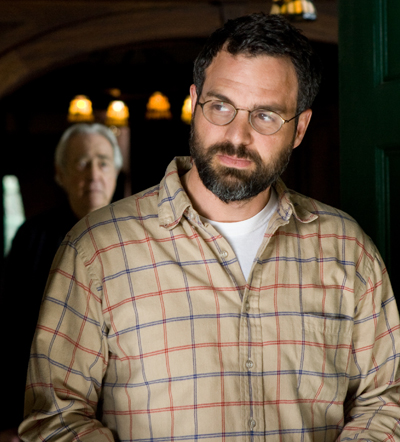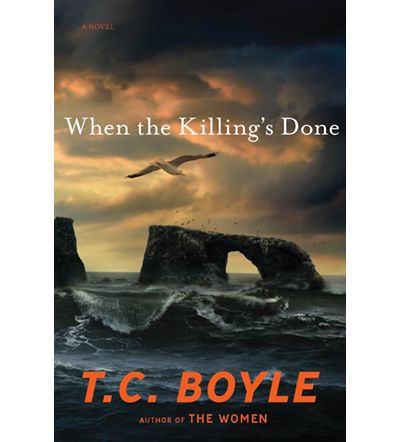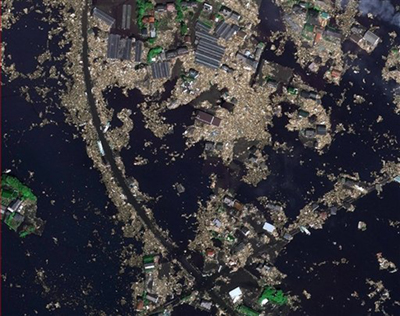
![]()
“When the apocalypse comes, you can race up to Canada,” muses Torquil Campbell. “It will be delayed by a week in Canada. You get an extra week.” Along with his fellow band-mate, Chris Dumont, Campbell is traveling through upstate New York while the two (and their touring band of friends) play shows as Memphis, promoting their third album, Here Comes A City, along the eastern seaboard. “Is that an esoteric question or a literal one?” Campbells replies when asked how long before Memphis reaches its destination. This roundabout way of looking at things, be it the apocalypse or a road trip, has guided Campbell throughout his musical career. As an active member of Montreal’s Stars, in addition to Memphis, the half-American half-British resident of Vancouver, Canada, makes band decisions as an excuse to hang out with friends.
“To be in a band with someone is a way of keeping current in their life,” Campbell states. “If you stop doing things with your friends, it turns into getting together and recounting the past twice a year over coffee. Your friendships turn into a series of memories and brief meetings and it gets increasingly distant. Every project I’m involved with is initiated by my relationship with the people in it.”
(more…)



Image courtesy of Roadside Attractions
For his previous documentary, 2009’s “Man on Wire,” James Marsh won an Oscar. That film told the story of Philippe Petit’s death-defying walk across a tightrope stretched between the towers of the World Trade Center. Now comes the director’s new release, “Project Nim,” which revisits the 1970s animal cognition experiment headed by Columbia University professor Herbert Terrace that attempted to teach sign language to a chimpanzee. That chimp, whose name was Nim, happened to be born the same year as the opening of the Trade Center, and as Marsh’s engaging and ultimately poignant film makes clear, the emotional life of one of our fellow primates can be as delicate as a high-wire balancing act.
The director spoke to PLANET about communication, evolution, and other monkey business ahead of “Project Nim’s” release:
(more…)



![]()
![]()
In China, challenging the official view of history can be a dangerous business. Recently, director Lu Chuan found this out when his film, City of Life and Death, was released. “Traitor!” was a common headline in news articles about the movie; soon, almost every radio and television channel in the country was discussing it, and Lu found himself targeted by vicious hate mail and death threats.
The movie that sparked this firestorm is not obviously provocative–it doesn’t imagine a sex life for Chairman Mao or take the side of students in the 1989 Tiananmen Square uprising. Set in 1937, City of Life and Death traces the story of the infamous Nanking massacre, or Rape of Nanking, when Japanese troops stormed China’s former capital city and killed and raped at will. Knowing they were overwhelmed, the Chinese high command deserted the city, leaving civilians unprotected. By the time Japanese troops were reined in six weeks later, some 300,000 civilians had died.
Shot beautifully in black and white, with powerful performances and an understated script, City of Life and Death takes an unblinking look at the terrible events of the massacre. Obliquely, it tells the story of John Rabe, a Nazi-affiliated German businessman who set up a “Safety Zone” in the city, saving thousands of lives. But mostly it’s about the ordinary people, on both sides, who got caught up in the tragedy. Small details–like Japanese soldiers cracking open bottles of soda pop they find on the street after storming the city–only serve to make the depictions of casual violence and rape more shocking.
(more…)




Mark Ruffalo as “Father Joe” in SYMPATHY FOR DELICIOUS.
![]()
Academy award-nominated actor, Mark Ruffalo has his directorial debut, SYMPATHY FOR DELICIOUS, out this month. The film was written by Christopher Thornton who Mark Ruffalo met while studying acting at the Stella Adler Theatre in Los Angeles. Ruffalo and Thornton also star in the film. SYMPATHY FOR DELICIOUS is about a paralyzed man’s (Delicious Dean, played by Christopher Thornton) journey to cope with his tragedy and a Priest (Joe, played by Ruffalo) who is trying to encourage him to realize Dean’s gift and his own dream to build a shelter for the homeless on skid row in Los Angeles. Dean is paralyzed in a motorcycle accident that leaves him unable to walk, in a wheel chair and living out of his car on skid row. However he is also left with the ability to heal people. It should be mentioned that Christopher Thornton is also paralyzed from a rock-climbing fall when he was 25. Ruffalo’s and Thornton’s 10-year collaboration leaves us with a film that explores the effects of tragedy, the conflicts between spirit, ego and superficiality and the struggle of compassion over material obsession and in the end the victory of salvation.
(more…)


![]()
Some people are surprised when they learn Wes Eisold — the creative force behind the blackened synth-pop group Cold Cave — was once the vocal-cord thrasher of hardcore bands like Give Up The Ghost and Some Girls. But, for Eisold, who spent a childhood constantly moving from city to city, change is as defining a characteristic as his cryptically dark lyrics are. Eisold just released Cherish The Light Years, his second full-length as Cold Cave, and it’s a marked departure from the lo-fi bedroom production on which the band first made a name. In fact, it’s a fully-blown electronic pop record, one so committed to its mode that comparisons with decade-specific new wave is an unavoidable knee-jerk reaction. But, to consider Cherish The Light Years only in this context would be, for Eisold, completely missing the point. Currently on a European tour, Eisold spoke with us about his artistic evolution, album aesthetics, and, among other things, how he decided to completely commit to his music.
![]()
Audio clip: Adobe Flash Player (version 9 or above) is required to play this audio clip. Download the latest version here. You also need to have JavaScript enabled in your browser.
Buy this at Other Music or iTunes.
(more…)




When the Killing's Done cover image/ courtesy: Viking
In his latest novel, T. Coraghessan Boyle considers the real life story of the National Park Service’s systematic slaughter of wild animals. To be clear, the species in question at the center of When the Killing’s Done are the invasive rats and non-native pigs whose presence has disrupted the ecological balance on Anacapa and Santa Cruz, two of the Channel Islands off the Southern Californian coast. Getting rid of these pests, according to the argument presented by the Park Service, would enable a return to the conditions as nature intended, before the arrival of sheep herders and shipwrecked gold prospectors introduced the undesirable creatures in the first place and set off a chain of habitat-altering ramifications.
Using this highly contentious campaign to frame the story, Boyle constructs a fictional tale of characters touched by the arguments over which lives are worth saving and just when it is reasonable to play God. Alma Boyd Takesue, the good-intentioned Park Service biologist who supports the extermination process, is pitted against the hotheaded and dreadlocked animal rights activist Dave LaJoy and his band of perfervid followers. The battle lines are drawn, the passions are intense, and nearly everyone, no matter their position on the killing, is out for blood.
Animals verses animals, humans taking on animals, and finally, humans up against humans – the conflicts presented here make this only the latest in Boyle’s literary explorations of the complexities present where fights over nature occur.
(more…)


In this picture publicly provided by the German aerospace DLR and their crisis center on Monday March 14, 2011 the Japanese city of Sendai is pictured on Saturday March 12, 2011 after the earthquake and the following tsunami. (AP Photo/DLR ZKI)
Since the strike of an 8.9 magnitude earthquake east of Sendai, Japan at 2:46 PM local time last Friday, the rest of the world has been watching in horror as one catastrophe has unfolded upon another. A devastating tsunami striking Japan’s northeastern coast, then growing concerns about the possible release of radioactivity from six nuclear reactors whose cooling systems were disrupted by the quake, all adding up to the worst destruction the country has seen in 65 years. The vast extent of the damage has revealed itself as rescuers move into the affected areas. Estimates early in the week place the number of casualties above 10,000, with 500,000 said to have been displaced.
The crisis continues to play out, with the nuclear failure possibly the most serious front of all, but mercifully, humanitarian efforts are already under way in some areas. To supplement Japan’s own considerable response actions, the United States quickly deployed naval rescue vessels to the Japanese coast, including the USS Ronald Regan, carrying relief supplies and manpower in an effort that’s being called “Operation Tomodachi,” which is Japanese for “friendship.” The U.S. Agency for International Development (USAID) has sent search and rescue teams and disaster response units of its own.
(more…)






 Facebook
Facebook Permalink
Permalink Digg
Digg Reddit
Reddit LinkedIn
LinkedIn StumbleUpon
StumbleUpon Tumblr
Tumblr




